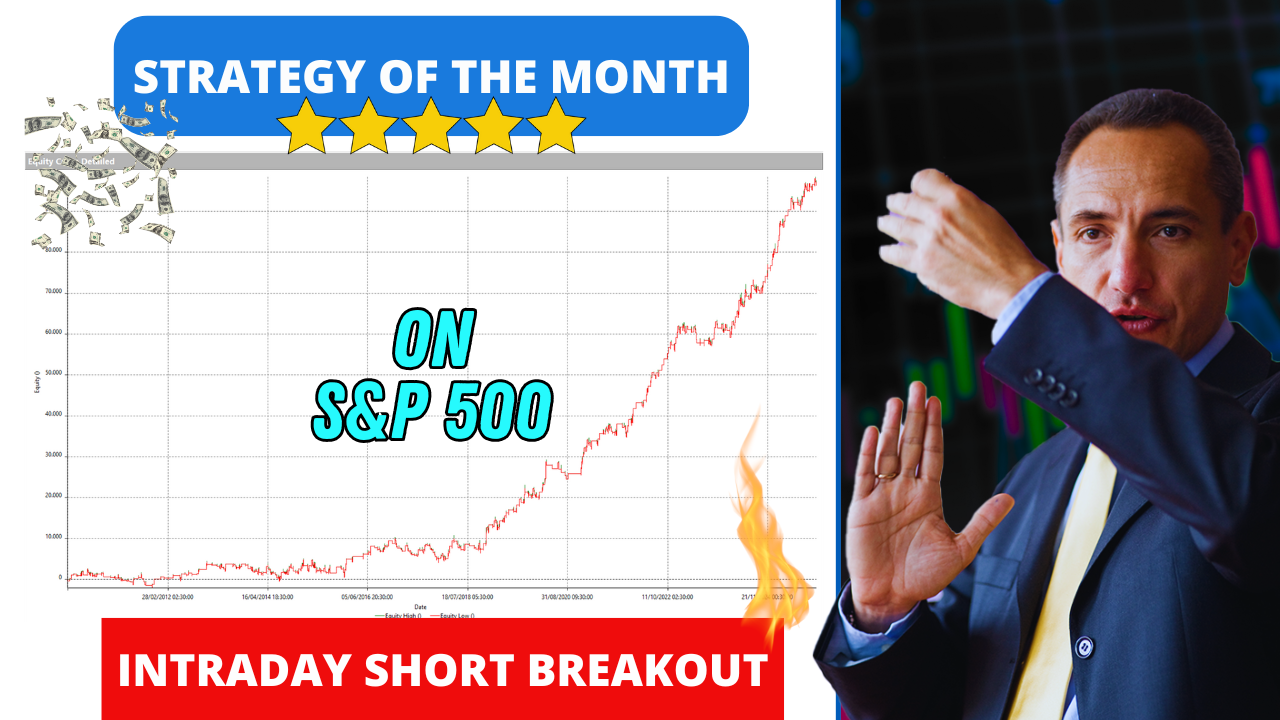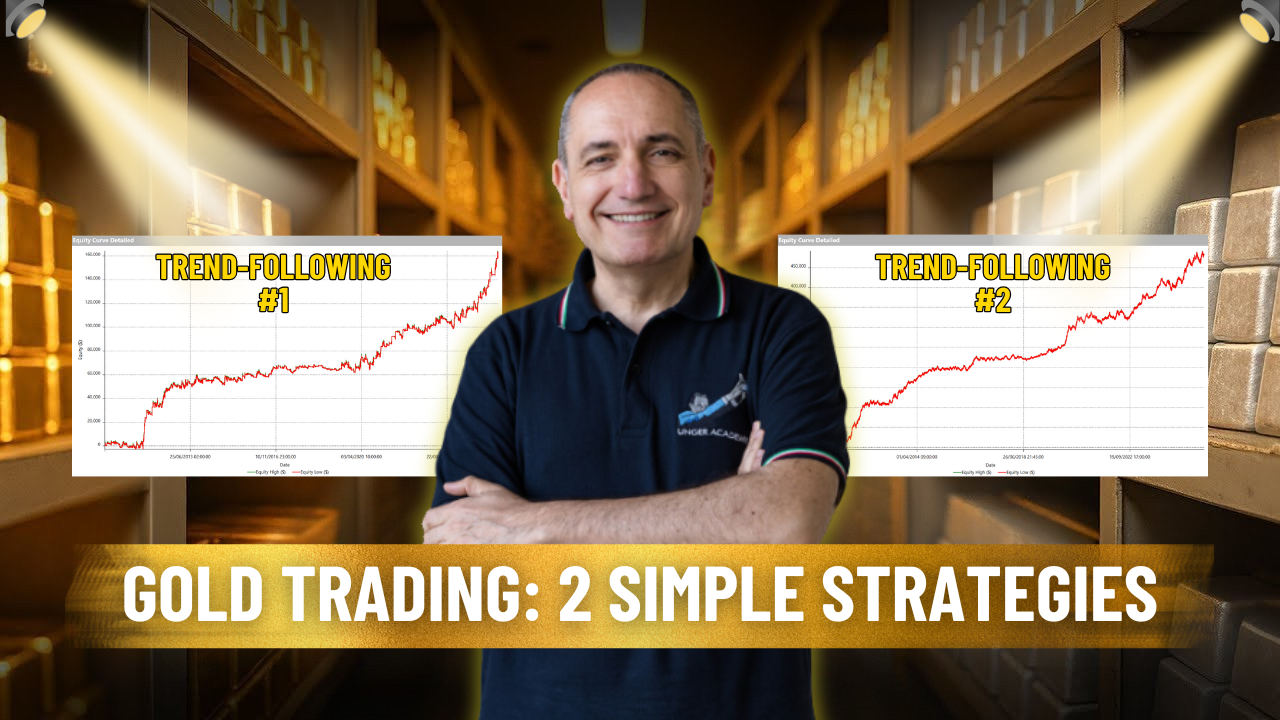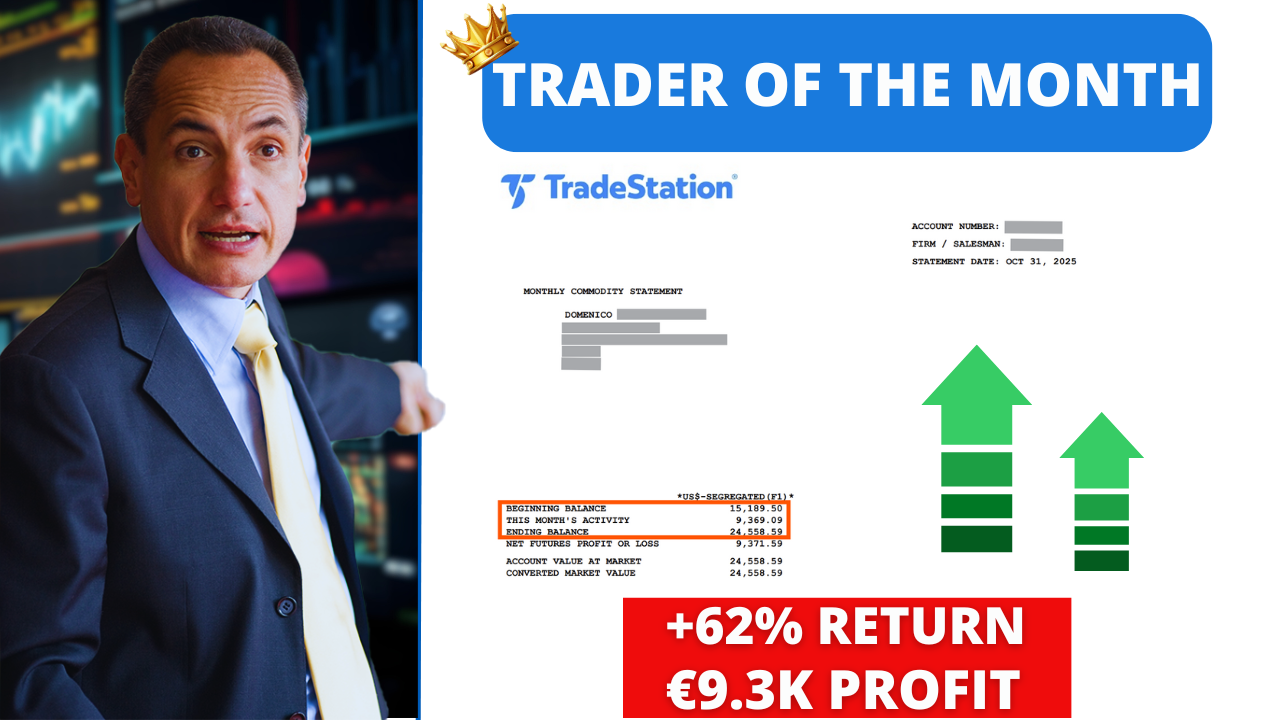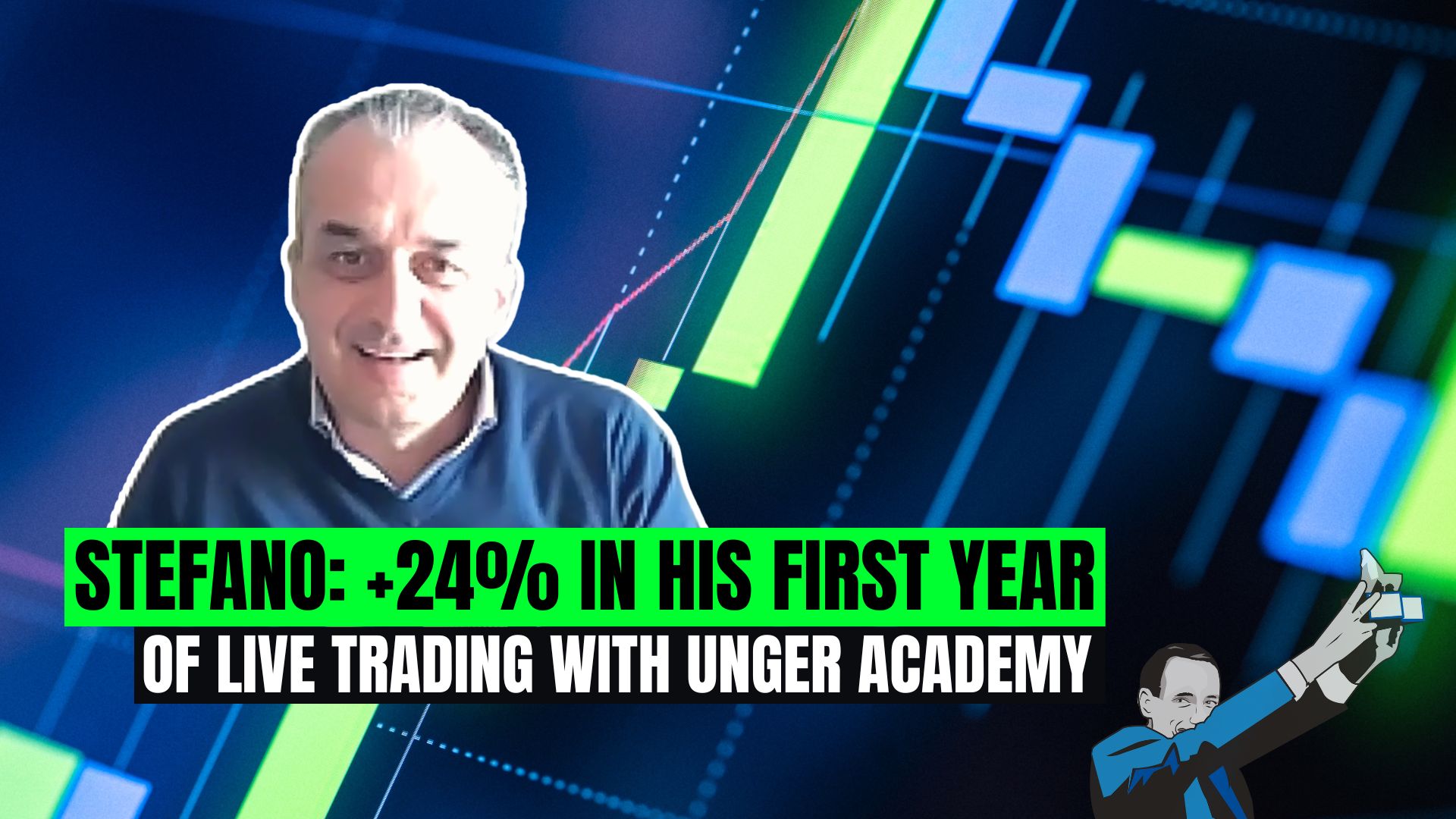Introduction: What is a Cryptocurrency Exchange?
What are the best cryptocurrency exchanges for 2025?
In this video, we’ll see together what a cryptocurrency exchange is, why it’s so important, and the criteria for choosing the one that best suits our trading needs.
In particular, we’ll consider this choice from the perspective of a systematic trader—like we are at Unger Academy—who needs to interface software, such as MultiCharts, with these platforms to send the orders generated by our strategies.
Cryptocurrencies are indeed a very interesting instrument for systematic trading, but they need to be managed correctly.
One key aspect to keep in mind is precisely the choice of the exchange you rely on for trading.
So, what exactly is a cryptocurrency exchange?
An exchange is a digital marketplace that allows you to trade—meaning buy and sell—cryptocurrencies and their derivatives, such as futures and options.
It’s often assumed that an exchange is the equivalent of a broker in traditional markets.
But in reality, that’s not entirely accurate.
You could say an exchange acts as both a broker and a marketplace because you can send orders directly to the exchange without needing an intermediary, which in traditional markets would typically be a broker.
To trade cryptocurrencies via an exchange, you need an account with the chosen exchange—specifically, that’s called a “wallet”, since we’re dealing with cryptocurrencies.
And the question we want to answer today is: Which exchange should we trust when operating in the cryptocurrency world?
Since there’s no regulated market, each one has its own pros and cons.
So it’s necessary to select them carefully.
That’s why, in this video, we’ll take a look at the main criteria to consider when choosing an exchange so everyone can make the best choice for their own way of trading.
We’ll then give an overview of the exchanges available, specifically for the MultiCharts platform, which is one of the many platforms you can use for systematic trading, but it’s the one we at Unger Academy prefer to run our trading systems on. We’ll do this to help you figure out which exchange to start with if you haven’t yet traded cryptocurrencies through an exchange.
Reliability and Security: The Top Priority
Let’s begin with a key point: the reliability and security of an exchange.
When you buy and sell cryptocurrencies, you’re entrusting your funds to the exchange.
Indeed, the private keys of the wallet where you deposit your funds are effectively held by the exchange.
So, you could say that every client is basically a creditor of the exchange.
The first thing to check is, of course, the reliability and level of security the exchange can guarantee.
There are no third-party guarantees on the funds you deposit with an exchange, unlike what happens with funds deposited in a bank, where they’re at least partially covered by deposit insurance.
Therefore, as a general rule, it’s always wise to limit the funds you keep on exchanges to the minimum necessary for your trading.
One important thing to keep in mind is that many of these exchanges have headquarters in tax havens or do not follow strict procedures to protect clients’ funds.
So it’s always best to gather as much information as possible about the exchange you’re considering, especially regarding its transparency in how it operates and manages your funds.
The FTX Case and the Push for Greater Transparency
It’s worth noting that over the years, as cryptocurrencies have become more popular, cyberattacks—and attempted scams and other illicit activities within the crypto world—have risen exponentially, in line with the overall growth of this sector’s business volume.The FTX case became emblematic: It was the world’s second-largest exchange at the time of its collapse.
It made history and marked a turning point for many exchanges, which from then on began to make their operations more transparent, for example by publishing proofs of their monetary reserves to guarantee customer deposits—so-called “Proof of Reserves.”
How to Manage Risks When Choosing the Right Exchange
Furthermore, many exchanges have started showing a willingness to comply with the increasing regulations that various countries are trying to introduce to bring some order to this sector.
In Europe, for instance, starting in 2025, the MiCA (Markets in Crypto-Assets Regulation) will come into effect, aiming to protect all customers in the crypto market.
There’s been news in recent days of the biggest cyberattack in history against one of the world’s largest exchanges—currently the second-largest by capitalization—namely Bybit.
In fact, Bybit was attacked by a group of North Korean hackers who made off with a staggering $1.4 billion, marking the largest such theft on record.
I’m not sure how many banking institutions could have handled a loss of that scale, but Bybit—thanks to its very rigorous management of client funds, always covered one-to-one against what’s deposited, and thanks to a swift response right after the incident—managed to handle the situation extremely well, and within just a few days, everything was back under control.
We’ll have to wait and see what happens next and how Bybit tries to recover those funds.
But all of this clearly shows why choosing an exchange is crucial to protect ourselves from potential unforeseen events like this. Moving on to another important factor:
Transaction Fees and Costs
Exchanges, like traditional brokers, charge fees for their services.
Based on the volume of transactions you execute, these fees can significantly impact your strategies’ performance.
The advice here is to carefully assess the costs of different exchanges so you know exactly how much it will cost to trade through a specific exchange.
Clearly, let’s not be misled by extremely low fees, because they’re not always a sign of a reliable exchange; therefore, as we mentioned before, the choice should primarily be about security and reliability, and only then can we also consider the fees.
Tools Available on Different Exchanges
In addition, it’s important to check which instruments are available on the different exchanges.
Not all exchanges, in fact, offer all the instruments available on the market.
Some exchanges specialize in the spot market, others in derivatives, and still others provide a wide range of products.
Depending on our needs, we must therefore verify that the products we require are available and, above all, that they have good liquidity, because this could affect the efficiency of order execution and thus the costs—ultimately tied to slippage, meaning how orders are executed—which can once again impact our results.
Lastly, an aspect that many people might overlook is also the level of customer support an exchange can provide.
Since the crypto market is still relatively young, there are probably only a few exchanges that can offer truly good support.
Up until now, this has been a rather sore point, because if problems arise, it isn’t easy to communicate with someone at the exchange to resolve potential difficulties.
How to Choose the Ideal Exchange for Systematic Trading
It’s always best, therefore, to confirm beforehand what kind of support an exchange offers, so you don’t end up in unpleasant situations later.
In conclusion, we could summarize that a genuinely solid exchange must certainly have a good level of reliability and security, must feature a wide range of instruments—at least those we need—preferably traded with decent volume, providing good liquidity, moderately low fees, and a customer support service that can assist in case of problems.
Overview of Exchanges Compatible with MultiCharts
As mentioned before, then, let’s now take a brief look at the exchanges that can be interfaced with the MultiCharts platform, which we use most often at Unger Academy, so we can get at least an initial overview to help us decide which exchange to begin with.
Clearly, this won’t be an exhaustive overview because, as stated, there are really a great many exchanges, and you can also choose others. However, these are the ones currently available to connect to MultiCharts and therefore the first ones we considered.
What these six exchanges we’re about to look at have in common is that they offer a good—or at least verifiable—level of security, since they’ve published their Proof of Reserves. From a transparency perspective, that gives us a certain degree of reliability.
Binance, BitMex, Bybit, Deribit, Kraken, and OKX
So, let’s go in strict alphabetical order to see the characteristics of these six exchanges in detail.
We have Binance, probably the most famous, and definitely the one with the highest overall capitalization among all available exchanges.
But there are also various other exchanges with slightly different features.
We have BitMex, Bybit, Deribit, Kraken, and OKX.
Features and Tools of the Selected Exchanges
First, let’s look at the types of instruments available on each of them.
We see that some also have options, while others only offer spot and futures.
Pros. Cons, Restrictions and Limitations
As for pros and cons, we’ve tried to summarize the various features below.
Among the pros of the different exchanges, I’d like to highlight that on some of them it’s possible to transfer cryptocurrencies using not just the layer 1—meaning the main cryptocurrencies—but also their layer 2, potentially taking advantage of lower fees for transfers.
In particular, this is possible on Binance, Bybit, Kraken, and OKX.
Regarding the cons, I’d draw your attention to these three exclamation marks we’ve placed on Binance, Kraken, and OKX because, for systematic trading, it’s a fairly important point that you can’t trade futures from certain countries on these exchanges.
Indeed, there are some nations where crypto futures trading isn’t allowed, and these exchanges comply with that rule, whereas others like BitMex, Bybit, and Deribit do allow it.
So, if someone wants to use futures, the choice is quite restricted.
Specifically, regarding Bybit, time-expiring futures are only available in USDC or as inverse futures—in other words, in cryptocurrency—while USDT futures are only perpetual; there are no time-expiring USDT futures.
Another important point to consider is that Good Till Canceled orders—those that remain active until the user cancels them—are not supported on inverse futures.
So that’s another aspect to keep in mind.
As for Deribit, you can’t use the spot market on MultiCharts; you can only chart futures.
Liquidity isn’t very high on the spot market or on USDT futures, whereas it’s pretty good on USDC futures.
And, as a final aspect, deposits and withdrawals can only be made in cryptocurrency. You can’t make bank transfers directly to Deribit.
Conclusion: Which Exchange is Best for Systematic Trading?
Great, we hope this video has been helpful in assessing which exchange you might start with for your systematic crypto trading journey.
Although, as mentioned, this certainly can’t be a comprehensive discussion of all the exchanges available online.
Cryptocurrencies are definitely a very interesting instrument for systematic trading, clearly if they’re part of a solid trading strategy.
But as we’ve seen, choosing which exchange to operate with can also be crucial, so you don’t end up adding risks unrelated to trading itself but tied to the exchange and how it manages its operations.
Alright, you can now evaluate which exchange best suits your needs.
Finally, let me remind you that if you’re interested in this kind of content or you’d like more information, there are useful links in the description. With that said, see you next time, and happy trading to everyone.







